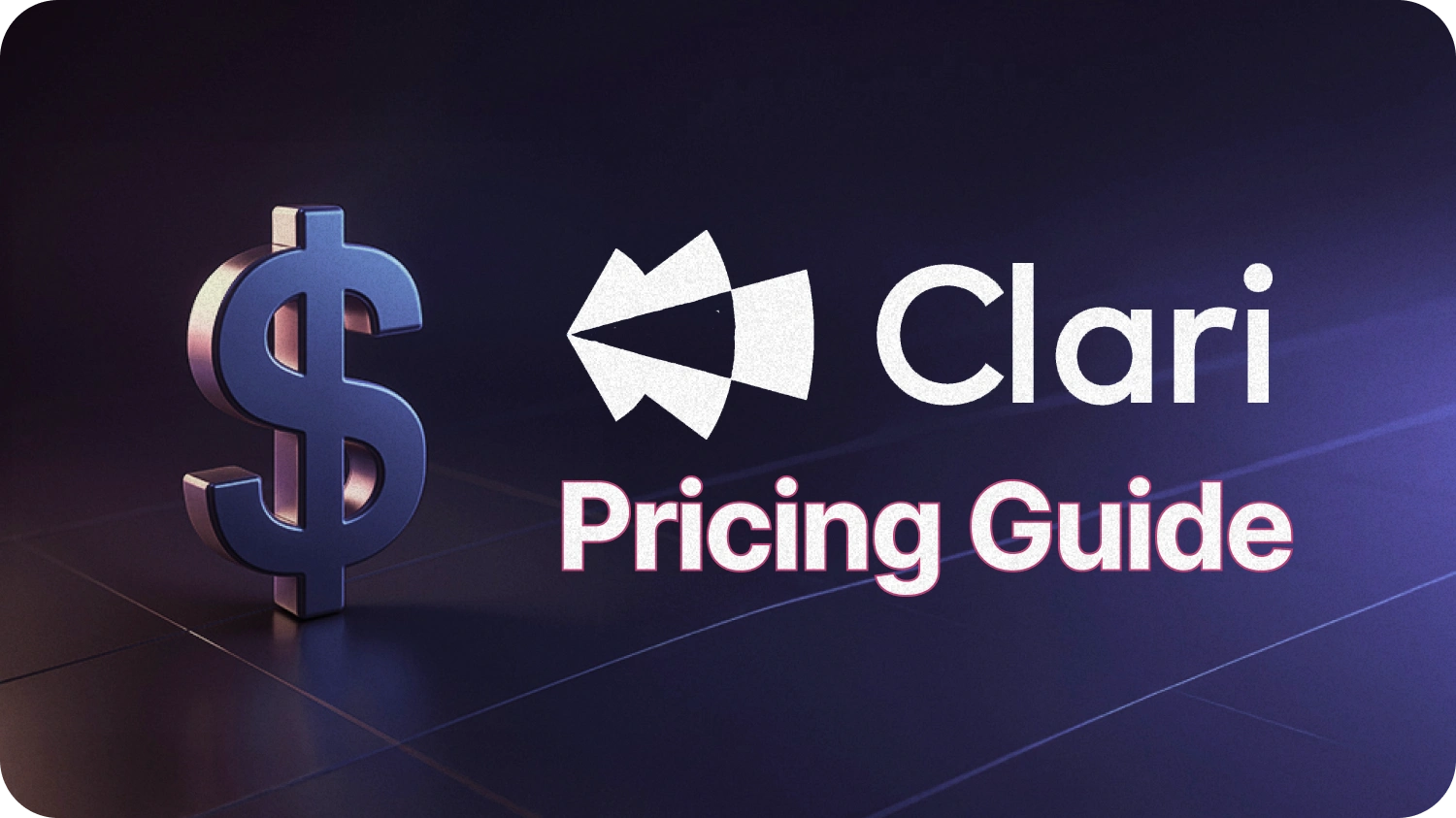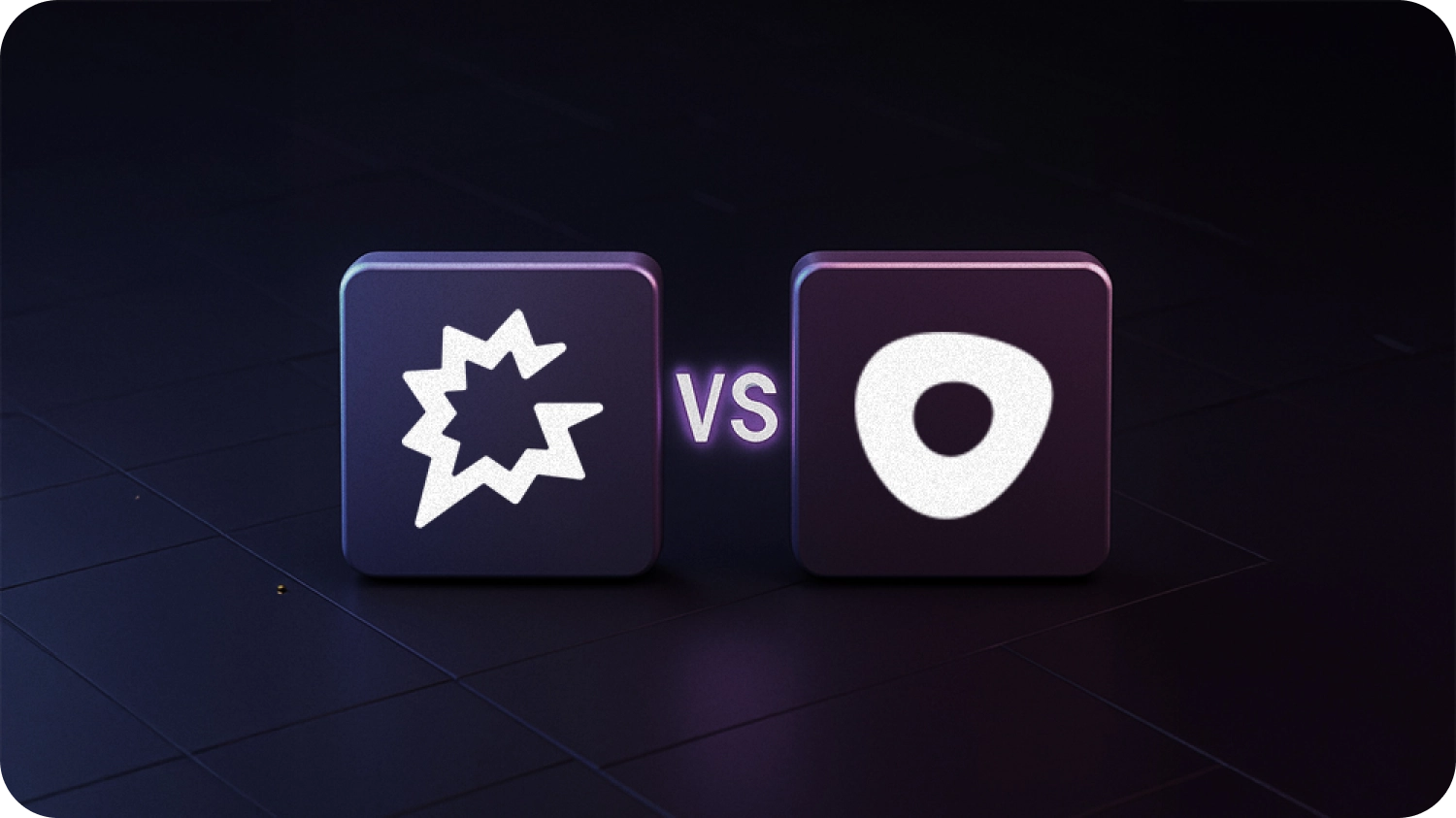Studies show that employees spend an average of 31 hours monthly in unproductive meetings, costing companies an estimated $37 billion annually in the U.S.
Organizations prioritize effective meeting management to optimize time and resources.
Meeting management software is the game-changer, making the entire lifecycle of a meeting-from scheduling and agenda planning to post-meeting follow-ups and action items-streamlined. These platforms help teams conduct more efficient, productive meetings while saving time and money by using advanced features such as AI-powered transcription, real-time collaboration tools, and detailed analytics.
This article will delve into the top meeting management software solutions that can transform how organizations conduct meetings in the digital age.
Comparison Table of Meeting Management Tools in 2025
Best Meeting Management Software in 2025
1. MeetRecord
MeetRecord offers an exceptional platform for businesses to boost meeting productivity. With AI-driven insights and seamless integrations, it provides robust tools for managing meetings effectively. Its standout feature includes real-time transcription, allowing users to focus on conversations without missing details. MeetRecord also provides comprehensive analytics to track meeting performance over time, serving as an invaluable resource for organizations aiming to optimize their meeting strategies.
Key Features:
- Real-Time Transcription: Captures every spoken word during meetings, providing accurate transcriptions.
- AI-Powered Insights: Analyzes meeting data to offer actionable insights for improvement.
- Seamless Integrations: Works smoothly with popular platforms like Zoom, Microsoft Teams and Digital Samba.
- Comprehensive Analytics: Tracks meeting performance metrics to identify trends and areas for improvement.
- Customizable Meeting Templates: Allows users to create and save meeting templates for consistent planning.
- Secure Data Storage: Ensures all meeting data is stored securely with enterprise-level encryption.
Pros:
- AI insights provide valuable feedback to enhance meeting productivity.
- Integration with major platforms simplifies the user experience, eliminating the need for multiple tools.
- Customizable templates save time and ensure consistency across meetings.
- Comprehensive analytics offer deep insights into meeting performance, aiding strategic planning.
- Secure and reliable, ensuring that sensitive information remains protected.
- User-friendly interface makes it accessible for users of all technical abilities.
Cons:
- Higher pricing tier may not suit very small businesses.
- Complex features can overwhelm new users without proper onboarding.
- Limited free version restricts access to advanced features.
- Depends heavily on internet connectivity, which can limit areas with poor networks.
- Learning curve for first-time users unfamiliar with AI-driven platforms.
Pricing Details:
- Professional: $39/user/month – Includes call recording and basic features.
- Business: $59/user/month – Adds transcription and CRM sync.
- Enterprise: Custom pricing – Offers advanced AI and analytics.
Best For:
Organizations looking for comprehensive meeting management software with AI insights and robust analytics.
Editor's Take:
MeetRecord stands out as a powerful tool for businesses prioritizing data-driven meeting management. Its AI capabilities and integration options make it a top choice for companies aiming to optimize their meetings.
2. Deel
Deel excels in providing remote teams with the tools needed for efficient collaboration. Known for its payroll and compliance features, Deel also offers meeting management solutions catering to teams across different regions. Its strength lies in simplifying administrative tasks, enabling teams to focus on productivity rather than logistics.
Key Features:
- Global Compliance Management: Ensures teams meet local labor laws and regulations.
- Integrated Meeting Scheduling: Simplifies meeting setup across different time zones.
- Automated Payroll Processing: Streamlines financial management for remote teams.
- Comprehensive Reporting: Provides insights into payroll and compliance status.
- Customizable Contracts: Tailors employment contracts to meet specific needs.
- Seamless Integrations with HR Tools: Enhances overall HR management efficiency.
Pros:
- Facilitates international team management with ease.
- Ensures compliance with local employment laws, reducing legal risks.
- Automates payroll, freeing up time for strategic tasks.
- Customizable contracts offer flexibility for diverse workforce needs.
- Comprehensive reporting aids in informed decision-making.
- Reliable customer support available to assist with any challenges.
Cons:
- Pricing can be high for smaller teams.
- Focused more on payroll and compliance, with less emphasis on meeting-specific features.
- Complex integration may require technical expertise.
- Limited customization for meeting management compared to dedicated solutions.
- Dependence on internet connectivity can be a drawback in remote areas.
Pricing Details:
- Custom Pricing: Based on team size and specific requirements.
Best For:
Global teams seeking a comprehensive solution combining payroll, compliance, and basic meeting management.
Editor's Take:
Deel is an excellent choice for companies with international teams, offering robust compliance and payroll solutions. While its meeting management features are not as advanced, it provides a solid foundation for global collaboration.
3. Google Meet
Google Meet, part of the Google Workspace suite, offers a straightforward video conferencing tool that integrates seamlessly with other Google apps. Designed for ease of use, it supports high-quality video calls and features such as screen sharing and live captions, catering to diverse meeting needs. Its integration with Google Calendar simplifies scheduling, ensuring effective meeting management.
Key Features:
- Seamless Google Workspace Integration: Works effortlessly with Google Calendar, Drive, and more.
- High-Quality Video and Audio: Ensures clear communication during meetings.
- Screen Sharing Capabilities: Facilitates collaborative work and presentations.
- Real-Time Captions: Improves accessibility for participants with hearing impairments.
- Secure Meetings: Provides encryption and security features to protect user data.
- Mobile App Availability: Supports meetings on the go with Android and iOS apps.
Pros:
- User-friendly interface makes it easy to use without extensive training.
- Integration with Google Workspace enhances productivity by streamlining workflow.
- Real-time captions improve accessibility and inclusivity.
- Secure and reliable platform ensures data protection during meetings.
- Free access with Google Workspace subscription offers great value.
- Mobile app support allows for flexibility in attending meetings from anywhere.
Cons:
- Limited advanced features compared to specialized meeting management software.
- Dependent on Google Workspace, which may not be ideal for non-Google users.
- Lacks meeting analytics for tracking performance and insights.
- May struggle with large-scale meetings, affecting performance.
- Requires a stable internet connection for optimal performance.
Pricing Details:
- Included with Google Workspace: Pricing starts at $6/user/month for basic features.
Best For:
Businesses already using Google Workspace looking for a simple and effective video conferencing solution.
Editor's Take:
Google Meet is an excellent choice for teams seeking a reliable video conferencing tool with seamless Google integration. While it lacks some advanced features, its ease of use and accessibility make it a top pick for many organizations.
4. Zoom
Zoom has become synonymous with video conferencing, offering a platform that caters to businesses of all sizes. Known for its high-quality video and audio, Zoom provides a range of features designed to enhance meeting experiences. From virtual backgrounds to breakout rooms, Zoom supports both professional and personal use. Its scalability makes it suitable for everything from one-on-one meetings to large webinars and conferences.
Key Features:
- High-Quality Video Conferencing: Supports HD video and audio for clear communication.
- Breakout Rooms: Allows participants to split into smaller groups for focused discussions.
- Virtual Backgrounds: Enhances engagement with customizable meeting environments.
- Screen Sharing: Facilitates presentations and collaborative work.
- Recording and Transcription: Captures meetings for future reference.
- Integration with Calendar Apps: Simplifies meeting scheduling and reminders.
Pros:
- Scalable platform suitable for various meeting sizes and types.
- Breakout rooms foster collaboration in educational and corporate settings.
- Reliable performance, even with large participant numbers.
- Virtual backgrounds add a personal touch to meetings, enhancing engagement.
- Recording capabilities ensure important discussions are documented.
- User-friendly interface makes it accessible to all users.
Cons:
- Security concerns have been raised in the past, though improvements have been made.
- Free version has time limits on group meetings, which can be restrictive.
- Overwhelming for new users due to the abundance of features.
- Higher pricing for advanced features, which may not be ideal for small businesses.
- Requires good internet connectivity for optimal performance.
Pricing Details:
- Free Plan: Basic features with a 40-minute limit on group meetings.
- Pro Plan: $15.99/host/month, includes extended meeting duration and reporting.
- Business Plan: $21.99/host/month, adds cloud recording and advanced admin features.
Best For:
Organizations of all sizes looking for a reliable and scalable video conferencing solution.
Editor's Take:
Zoom remains a leading choice for video conferencing, offering robust features and scalability. While security concerns have been addressed, its ease of use and versatility make it a preferred option for many businesses.
5. Zoho Meeting
Zoho Meeting, part of the Zoho suite, offers a comprehensive platform for web conferencing and webinars. Designed for businesses of all sizes, it provides features that enhance virtual collaboration. With a focus on security and privacy, Zoho Meeting protects user data. Its integration with other Zoho applications makes it ideal for organizations already using the Zoho ecosystem.
Key Features:
- Web Conferencing and Webinar Capabilities: Supports a variety of virtual meeting formats.
- Secure Meetings: Provides encryption and privacy features to protect user data.
- Screen Sharing and Recording: Facilitates collaborative work and documentation.
- Integration with Zoho Apps: Enhances productivity by streamlining workflow.
- Customizable Registration Forms: Allows users to tailor webinar registration processes.
- Real-Time Polls and Q&A: Engages participants and gathers feedback during webinars.
Pros:
- Integration with Zoho apps streamlines workflow and enhances productivity.
- Secure platform ensures user data is protected during meetings.
- Customizable registration forms offer flexibility for webinars.
- Real-time polls and Q&A enhance participant engagement.
- Affordable pricing makes it accessible to small businesses.
- User-friendly interface simplifies the meeting setup process.
Cons:
- Limited features in the free version, which may not meet all needs.
- Dependent on Zoho ecosystem, which may not be ideal for non-Zoho users.
- May struggle with large-scale webinars, affecting performance.
- Learning curve for users unfamiliar with Zoho products.
- Lacks some advanced features offered by competitors.
Pricing Details:
- Free Plan: Basic features for up to 3 participants.
- Standard Plan: $1/host/month, includes advanced meeting features.
- Professional Plan: $3/host/month, adds webinar capabilities.
Best For:
Organizations already using Zoho products looking for an integrated web conferencing solution.
Editor's Take:
Zoho Meeting provides a secure and affordable platform for web conferencing and webinars. Its integration with the Zoho suite makes it an ideal choice for businesses using Zoho products.
6. Diligent Boards
Diligent Boards is a board meeting management software designed for organizations seeking to enhance their governance practices. It provides a secure platform for board members to collaborate and manage meeting materials efficiently. With features like secure document sharing and real-time collaboration, Diligent Boards ensures that board members have the tools needed to make informed decisions. Its focus on security and compliance makes it an ideal choice for organizations in regulated industries.
Key Features:
- Secure Document Sharing: Ensures sensitive board materials are protected.
- Real-Time Collaboration: Facilitates communication and decision-making among board members.
- Meeting Agenda Management: Simplifies the process of creating and distributing agendas.
- Voting and Resolutions: Supports board decision-making processes.
- Integration with Governance Tools: Enhances overall governance practices.
- Mobile App Availability: Allows board members to access materials on the go.
Pros:
- Focus on security and compliance ensures sensitive information is protected.
- Real-time collaboration enhances communication and decision-making.
- Integration with governance tools streamlines board processes.
- Mobile app support provides flexibility for board members.
- User-friendly interface makes it accessible to all board members.
- Comprehensive document management enhances organization and efficiency.
Cons:
- Higher pricing may not suit smaller organizations.
- Complex features can overwhelm users without proper training.
- Limited customization for non-board meeting use cases.
- Dependence on internet connectivity can be a drawback in remote areas.
- Requires dedicated IT support for implementation and maintenance.
Pricing Details:
- Contact for Pricing: Based on organization size and specific requirements.
Best For:
Organizations in regulated industries looking for a secure and comprehensive board meeting management solution.
Editor's Take:
Diligent Boards is a top choice for organizations prioritizing security and compliance in their board meeting management. Its comprehensive features and focus on governance make it an ideal solution for regulated industries.
7. Infinity
Infinity offers a customizable project management platform with meeting management capabilities. Its flexibility allows users to tailor the platform to their specific needs, making it a versatile tool for teams of all sizes. With features like task management, document sharing, and calendar integration, Infinity provides a comprehensive solution for managing meetings and projects. Its lifetime access pricing model offers great value for organizations seeking a long-term solution.
Key Features:
- Customizable Platform: Allows users to tailor features to their specific needs.
- Task Management: Facilitates organization and prioritization of meeting tasks.
- Document Sharing: Supports collaboration by allowing users to share files.
- Calendar Integration: Simplifies meeting scheduling and reminders.
- Lifetime Access Pricing: Offers a cost-effective long-term solution.
- Mobile App Availability: Supports meetings on the go with Android and iOS apps.
Pros:
- Customizable platform allows users to tailor features to their specific needs.
- Task management features enhance organization and productivity.
- Document sharing supports collaboration and information sharing.
- Calendar integration simplifies meeting scheduling and reminders.
- Lifetime access pricing offers great value for organizations.
- Mobile app support provides flexibility for managing meetings on the go.
Cons:
- Higher upfront cost for lifetime access, which may not suit all organizations.
- Complex features can overwhelm new users without proper onboarding.
- Limited meeting-specific features compared to dedicated solutions.
- Dependence on internet connectivity can be a drawback in remote areas.
- Learning curve for users unfamiliar with customizable platforms.
Pricing Details:
- Basic: $6/user/month
- Pro: $9/user/month
- Unlimited: $112 flat rate/month
- Agency: 262 flat rate/month
- Echo: Custom Plan
Best For:
Organizations seeking a customizable project management solution with meeting management capabilities.
Editor's Take:
Infinity offers a flexible and cost-effective solution for organizations seeking a customizable platform for meeting management. Its lifetime access pricing provides great value, making it an attractive option for long-term use.
8. GoToMeeting
GoToMeeting provides a professional online meeting platform, known for its reliability and ease of use. It offers features designed to enhance virtual collaboration, including screen sharing, recording, and mobile app support. GoToMeeting's focus on simplicity makes it ideal for organizations seeking a straightforward solution for meeting needs. Its flexible pricing model caters to businesses of all sizes.
Key Features:
- High-Quality Video Conferencing: Supports clear communication during meetings.
- Screen Sharing: Facilitates collaborative work and presentations.
- Recording and Transcription: Captures meetings for future reference.
- Mobile App Support: Allows for flexibility in attending meetings on the go.
- Integration with Calendar Apps: Simplifies meeting scheduling and reminders.
- Customizable Meeting Templates: Offers consistency across meetings.
Pros:
- Reliable performance, even with large participant numbers.
- User-friendly interface makes it accessible to all users.
- Screen sharing and recording enhance collaboration and documentation.
- Mobile app support provides flexibility for meetings on the go.
- Customizable meeting templates save time and ensure consistency.
- Flexible pricing model caters to businesses of all sizes.
Cons:
- Limited advanced features compared to specialized meeting management software.
- Free version has time limits on group meetings, which can be restrictive.
- Higher pricing for advanced features, which may not be ideal for small businesses.
- Requires good internet connectivity for optimal performance.
- Learning curve for users unfamiliar with online meeting platforms.
Pricing Details:
- Professional Plan: $12/organizer/month, includes basic meeting features.
- Business Plan: $16/organizer/month, adds advanced admin features.
- Enterprise Plan: Custom pricing
Best For:
Organizations seeking a reliable and easy-to-use online meeting platform.
Editor's Take:
GoToMeeting is a solid choice for businesses seeking a reliable and straightforward online meeting solution. Its user-friendly interface and flexible pricing make it a top pick for organizations of all sizes.
9. BlueJeans
BlueJeans offers a video conferencing platform known for its high-quality audio and video powered by Dolby Voice. It provides features designed to enhance virtual collaboration, including screen sharing, recording, and mobile app support. BlueJeans' focus on audio quality makes it ideal for organizations seeking clear communication during meetings. Its integration with popular calendar apps simplifies scheduling, ensuring effective meeting management.
Key Features:
- High-Quality Audio and Video: Powered by Dolby Voice for clear communication.
- Screen Sharing: Facilitates collaborative work and presentations.
- Recording and Transcription: Captures meetings for future reference.
- Mobile App Support: Allows for flexibility in attending meetings on the go.
- Integration with Calendar Apps: Simplifies meeting scheduling and reminders.
- Customizable Meeting Templates: Offers consistency across meetings.
Pros:
- High-quality audio and video enhance communication during meetings.
- Screen sharing and recording support collaboration and documentation.
- Mobile app support provides flexibility for meetings on the go.
- Integration with calendar apps simplifies scheduling and reminders.
- Customizable meeting templates save time and ensure consistency.
- Reliable performance, even with large participant numbers.
Cons:
- Higher pricing for advanced features, which may not be ideal for small businesses.
- Limited advanced features compared to specialized meeting management software.
- Free version has time limits on group meetings, which can be restrictive.
- Requires good internet connectivity for optimal performance.
- Learning curve for users unfamiliar with video conferencing platforms.
Pricing Details:
- Standard Plan: $9.99/host/month, includes basic meeting features.
- Pro Plan: $13.99/host/month, adds advanced admin features.
- Enterprise Plan: $16.66/host/month, offers premium features.
Best For:
Organizations seeking a video conferencing platform with high-quality audio and video.
Editor's Take:
BlueJeans offers a reliable and high-quality video conferencing solution, making it an ideal choice for organizations prioritizing clear communication. Its integration with popular calendar apps and customizable meeting templates enhance its overall value.
10. Clearooms
Clearooms simplifies the process of booking and managing meeting spaces by offering a range of features that enhance efficiency in managing physical meeting rooms. With real-time availability, booking notifications, and integration with calendar apps, Clearooms focuses on simplicity, making it an ideal choice for organizations seeking a straightforward solution for managing meeting spaces.
Key Features:
- Real-Time Availability: Provides up-to-date information on room availability.
- Booking Notifications: Keeps users informed of room bookings and changes.
- Integration with Calendar Apps: Simplifies meeting scheduling and reminders.
- Customizable Room Layouts: Allows users to tailor room setups to their needs.
- Mobile App Support: Provides flexibility for managing meeting room bookings on the go.
- User-Friendly Interface: Simplifies the process of booking and managing meeting rooms.
Pros:
- Real-time availability ensures users have accurate information on room availability.
- Booking notifications keep users informed of room bookings and changes.
- Integration with calendar apps simplifies scheduling and reminders.
- Customizable room layouts offer flexibility for different meeting types.
- Mobile app support provides flexibility for managing bookings on the go.
- User-friendly interface makes it accessible to all users.
Cons:
- Limited features for virtual meetings, which may not meet all needs.
- Dependent on internet connectivity, which can be a limitation in areas with poor network.
- Higher pricing for advanced features, which may not be ideal for small businesses.
- Complex features can overwhelm new users without proper onboarding.
- Learning curve for users unfamiliar with meeting room management software.
Pricing Details:
- Contact for Pricing: Based on organization size and specific requirements.
Best For:
Organizations seeking a straightforward solution for managing physical meeting spaces.
Editor's Take:
Clearooms provides a simple and effective solution for managing meeting spaces, making it an ideal choice for organizations seeking to streamline their room booking processes. Its real-time availability and booking notifications enhance user experience, ensuring efficient management of meeting spaces.
How to Choose Meeting Management Software
When selecting meeting management software, consider these factors:
1. Features: Assess specific features offered by each platform and determine which align with your organization's needs.
2. Integration: Consider how well the software integrates with your existing tools and systems.
3. Pricing: Evaluate the pricing structure to ensure it fits within your budget.
4. Scalability: Choose a platform that can grow with your organization as needs evolve.
5. User Experience: Opt for software that provides a seamless experience for all users.
6. Security: Ensure the platform offers robust security measures to protect sensitive data.
Benefits of Meeting Management Software
Enhanced Productivity
Meeting management software streamlines organizing and conducting meetings, allowing teams to focus on productivity rather than logistics.
Improved Collaboration
Features like screen sharing, real-time collaboration, and document sharing enhance team collaboration.
Efficient Scheduling
Integration with calendar apps and real-time availability features simplify scheduling, reducing conflicts and ensuring efficient time use.
Comprehensive Analytics
Many tools offer analytics features that provide insights into meeting performance, helping organizations identify trends and areas for improvement.
Secure Data Management
Software often includes security features like encryption and secure document sharing, ensuring sensitive information remains protected.
Summing it up
The biggest misconception of attending any meeting is - you think you’re just committing 30-60 minutes of the scheduled time. But you don’t realize the lifecycle of a meeting is a long one and it has many steps involved in it. The reality is, you end up spending more than 15% of your time managing those meetings in addition to attending those. Life is short, so we better spend our time on the things that matter.
We hope with these tips and tools shared above, now you are armed with the right set of solutions to maximize your time and cut back on the meeting management wastage. You just have to pinpoint where in the meeting’s lifecycle you are struggling the most, and implement a tool or tip that works best for you!
Frequently Asked Questions
Meeting management software is a tool designed to streamline organizing, conducting, and managing meetings. It often includes features like scheduling, document sharing, real-time collaboration, and analytics.
By automating administrative tasks and providing collaboration tools, meeting management software allows teams to focus more on productivity and less on logistics.
Many tools offer security features like encryption, secure document sharing, and user authentication to protect sensitive information.
Consider factors like features, integration, pricing, scalability, user experience, and security when selecting software for your organization.
Yes, many platforms offer integrations with popular tools like calendar apps, project management software, and communication platforms to enhance workflow efficiency.


.svg)

.webp)








